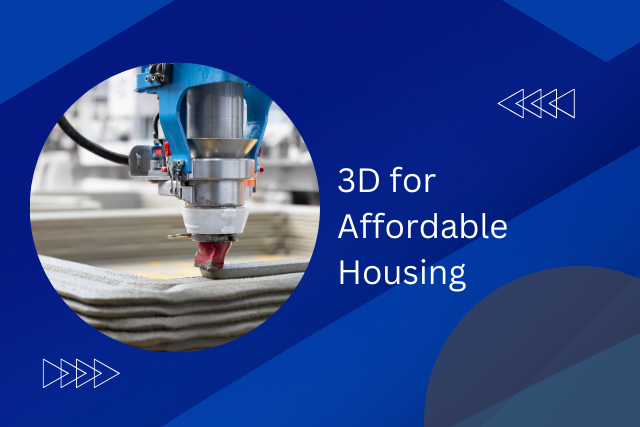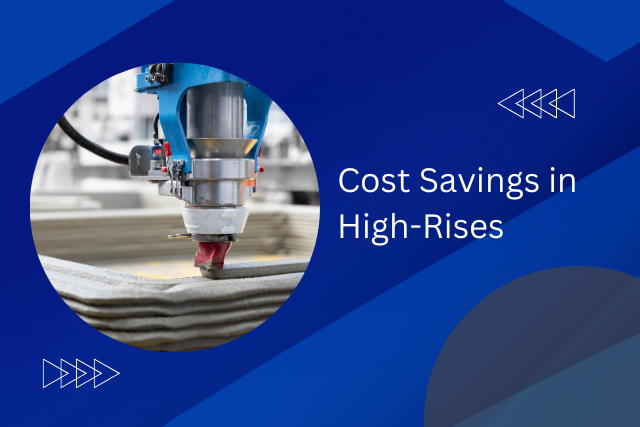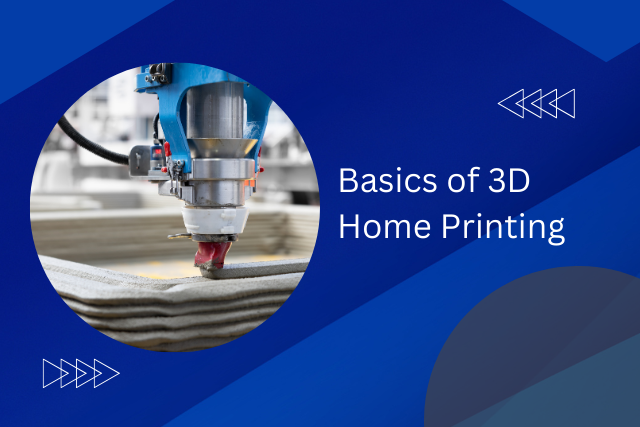The arrival of 3D printing technology is changing how we make things, making it cheaper to pay workers and less wasteful. This new way of making things can create parts only when they are needed, which means we don’t have to keep a lot of extra stuff lying around. This helps avoid wasting materials like we see with old ways of making things.
Also, because 3D printing can do complex jobs on its own, there’s less need for people to do these tasks by hand. This makes work faster and more efficient. As we look at all the ways 3D printing is helpful, it’s interesting to think about how it could make making things better for the planet and more cost-effective. What could this mean for how things are made all over the world and for taking care of our environment?
Revolutionizing Manufacturing Efficiency
Using the power of 3D printing, industries are making making things a lot faster and with less waste. This cool technology is changing how we design and make things, and it’s also better for the planet. With 3D printing, you can turn a design on your computer into a real object without needing a bunch of extra steps that older ways of making things require. This means we can make things faster and use less stuff to do it.
Also, 3D printing is really good at not wasting materials. The old way of making things often meant cutting out shapes from big pieces of material and throwing away the leftovers. 3D printing doesn’t do this. It adds material little by little to make something, using only what is needed. This saves money on materials and is good for the earth.
In short, 3D printing is making making things easier, faster, cheaper, and more earth-friendly.
Precision On-Demand Production
3D printing technology is changing how things are made by allowing for precision and making items exactly as needed. This big change helps businesses break free from old ways of making things, letting them design and make products more freely. One key advantage is being able to make unique, complicated items without the high costs of traditional methods like molds.
The advanced abilities of 3D printing make it possible to create parts with complex shapes that would be too hard or too expensive with other methods. This not only makes creating prototypes easier but also improves how the final product works and looks. Plus, 3D printing is more careful with materials, which helps the environment and cuts down on costs.
Many industries, like aerospace and healthcare, are finding this way of making things very useful. It makes making things faster and better by turning digital designs straight into real objects. 3D printing encourages new ideas, gets products ready faster, and allows for making things just the way people want them. This opens up a new period of freedom in making things.
Reducing Excess Inventory
3D printing helps cut down on waste and keeps inventory levels low, making businesses run better and more green. This cool tech allows for making things only when they’re needed and just in the right amount. This means businesses don’t make too much stuff, saving resources and letting them quickly adapt to what customers want without having extra stuff lying around.
| Benefit | Traditional Manufacturing | 3D Printing |
|---|---|---|
| Inventory Levels | High | Low |
| Waste Generation | High | Minimal |
| Response to Demand | Slow | Fast |
With 3D printing, companies don’t have to keep a lot of physical items ready to go. Instead, they use digital files to make items on demand. This means they don’t need as much space to store things, which saves money. Also, this way of making things is better for the planet because it uses materials more carefully, reducing waste and helping keep our environment healthy. In short, 3D printing makes businesses work smarter and helps take care of our world.
Minimizing Human Intervention
3D printing helps cut down on too much stock and waste. It also means there’s less need for people to be involved in making things. This big change makes it easier to make complex and special products without a lot of hands-on work. Machines can now understand digital designs and make things by themselves, layer by layer, with great care and always the same way. This automation makes making things faster and lets people do more important, creative, and problem-solving work. This makes people happier at work and leads to new ideas.
Since we can now make parts straight from digital designs, there’s less need for people to set things up, watch over them, or make changes like they used to. This move to more machine work means fewer mistakes by people, and the quality of what’s made stays good. Also, because 3D printing is fast and flexible, it’s easier to try out new designs quickly. This means new products can be sold sooner. In short, by having machines do more of the work, 3D printing makes making things better, more flexible, and full of new possibilities. This gives companies a chance to try new things and enter new markets more easily.
Cutting Labor Costs
Using 3D printing technology in making things can help save money on labor costs. By using 3D printing, companies need fewer people to make products because the machines do a lot of the work. This means employees can focus on more important, creative, or planning tasks, which can make them happier and more productive at work.
3D printing can make complex parts all in one piece, which cuts down on the need for many workers to put things together. This saves time and money. Also, because 3D printing is very accurate, there are fewer mistakes, which means less time and materials are wasted. This also helps save on labor costs.
In today’s world, where being fast and saving money are very important, using 3D printing is a smart move. It allows companies to use their people and money better, leading to more innovation and the ability to compete better in the market. This technology also gives companies the chance to try new things without spending too much money.
Limiting Material Waste
One of the standout benefits of 3D printing technology is its capacity to significantly reduce material waste, underscoring its role in sustainable manufacturing practices. Through the employment of precise material deposition, 3D printing ensures that only the necessary amount of material is used, effectively minimizing excess. Furthermore, the integration of on-demand production and material reusability strategies enhances the efficiency and environmental friendliness of the manufacturing process.
Precision Minimizes Excess
The key feature of 3D printing technology is its amazing precision which greatly reduces waste of materials. This method represents a big step towards making products in a way that’s better for the planet. It shows how smart technology can help take care of the environment. By placing material exactly where it’s needed, 3D printing is a smart way to use resources, combining the ideas of freedom and responsibility in making something.
| Aspect | Emotional Appeal |
|---|---|
| Precision | Empowerment |
| Efficiency | Hope |
| Sustainability | Pride |
This method not only saves materials but also gives people and businesses the chance to make things without unnecessary waste. The power of 3D printing is in its ability to find the right balance between being innovative and not harming the environment, aiming for a future where we can have both freedom and care for our planet.
On-Demand Production Benefits
The start of on-demand production with 3D printing is a cool way to cut down on wasting materials, making it a big step towards making things in a way that’s better for the planet. This way of making things fits well with wanting to make things as needed, letting creators and makers build just what is needed, right when it’s needed.
On-demand 3D printing means we don’t need to keep a lot of stuff in storage, which really helps avoid using too much material. This method saves resources and makes making things more efficient and flexible. The smart use of 3D printing means materials are used very carefully, which helps in reducing waste even more. Moving to on-demand production shows a future where making things in an eco-friendly way is possible.
Material Reusability Strategies
New ways of making 3D printing more eco-friendly are changing the game by greatly reducing waste and helping the environment. Now, we can recycle and use again materials that we thought were only good for one use. This is done by creating a system where leftover materials are picked up, cleaned, and put back into making new things.
This big step helps lessen the harm to our planet. These methods are good for the earth and save money by cutting down on material costs. The smart process of sorting and fixing materials to be good as new for printing again is helping companies to be more sustainable. This makes it possible to keep innovating and moving away from old ways that create too much waste.
Sustainable Manufacturing Impact
The advent of 3D printing technology heralds a transformative era in sustainable manufacturing, offering significant strides in efficiency and environmental stewardship. By optimizing material usage, this innovative approach not only minimizes waste but also paves the way for advanced recycling processes, further bolstering its eco-friendly credentials.
Furthermore, the reduction in energy consumption associated with 3D printing processes underscores its potential to significantly mitigate the carbon footprint of manufacturing activities, marking a pivotal step towards more sustainable industrial practices.
Minimized Material Usage
Using 3D printing technology to use less material is a big step towards making things in a way that’s better for the planet. This smart method fits with the idea of making only what we need, by putting materials exactly where they’re supposed to go, which means we don’t waste much.
Unlike older ways of making things where a lot of extra material gets cut away and thrown out, 3D printing builds things up layer by layer, sticking closely to the design. This doesn’t just save materials, but also cuts down on how much it costs to make things, giving companies an advantage.
By using materials wisely, 3D printing also helps in reducing the harm to the environment, meeting the demands of people who prefer products that are kind to the earth. This move towards using resources wisely shows that we can come up with new ideas while taking care of our planet, marking a new phase in how things are made.
Enhanced Recycling Processes
3D printing is helping make making things more eco-friendly by using better recycling methods. This cool way of making stuff lets us reuse materials over and over, cutting down on waste and helping the planet. Now, we can take old plastic and metal parts, and turn them into something new, like filament or powder for 3D printers.
This is great because it means we don’t need to always use new materials. The smart tech in 3D printing makes sure that even though these materials are recycled, they’re still really good quality. This big change is helping companies be more green and care for the environment.
Reduced Energy Consumption
3D printing helps the environment by using less energy. It makes things by adding layers of material to create an object, just like the design on a computer. This method is very careful and uses less material, which means it needs less energy.
Old ways of making things usually take away parts of a big piece of material, wasting a lot and using more energy. 3D printing is different because it adds material instead of taking it away, saving both materials and energy. This change is good for our planet and helps companies make new things in a way that’s better for the environment and can save them money.
Conclusion
In conclusion, 3D printing is changing how we make things in a big way. It makes making things more efficient and better for the planet. This technology allows making things only when needed, which means we don’t have to make more than necessary. This helps in reducing the amount of work people have to do and also cuts down costs.
Also, 3D printing is great because it uses materials wisely, which means less waste. This technology doesn’t just make the making process better but also helps in taking care of our environment. This is a big step forward in how we make things.






